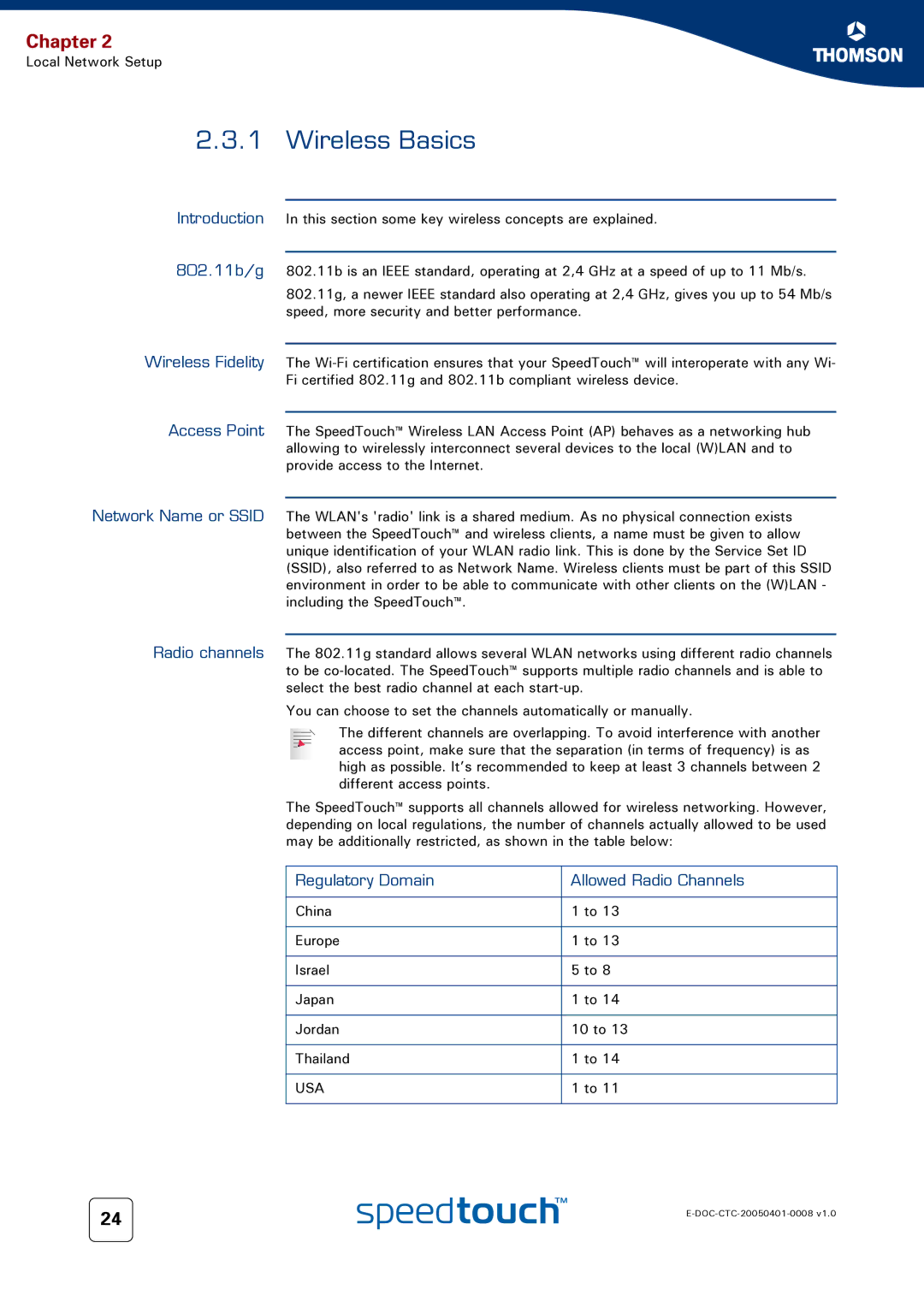
Chapter 2
Local Network Setup
2.3.1 Wireless Basics
Introduction In this section some key wireless concepts are explained.
802.11b/g 802.11b is an IEEE standard, operating at 2,4 GHz at a speed of up to 11 Mb/s.
802.11g, a newer IEEE standard also operating at 2,4 GHz, gives you up to 54 Mb/s speed, more security and better performance.
Wireless Fidelity The
Access Point The SpeedTouch™ Wireless LAN Access Point (AP) behaves as a networking hub allowing to wirelessly interconnect several devices to the local (W)LAN and to provide access to the Internet.
Network Name or SSID The WLAN's 'radio' link is a shared medium. As no physical connection exists between the SpeedTouch™ and wireless clients, a name must be given to allow unique identification of your WLAN radio link. This is done by the Service Set ID (SSID), also referred to as Network Name. Wireless clients must be part of this SSID environment in order to be able to communicate with other clients on the (W)LAN - including the SpeedTouch™.
Radio channels The 802.11g standard allows several WLAN networks using different radio channels to be
You can choose to set the channels automatically or manually.
The different channels are overlapping. To avoid interference with another
access point, make sure that the separation (in terms of frequency) is as high as possible. It’s recommended to keep at least 3 channels between 2 different access points.
The SpeedTouch™ supports all channels allowed for wireless networking. However, depending on local regulations, the number of channels actually allowed to be used may be additionally restricted, as shown in the table below:
Regulatory Domain | Allowed Radio Channels |
|
|
China | 1 to 13 |
|
|
Europe | 1 to 13 |
|
|
Israel | 5 to 8 |
|
|
Japan | 1 to 14 |
|
|
Jordan | 10 to 13 |
|
|
Thailand | 1 to 14 |
|
|
USA | 1 to 11 |
|
|
24 | |
|
